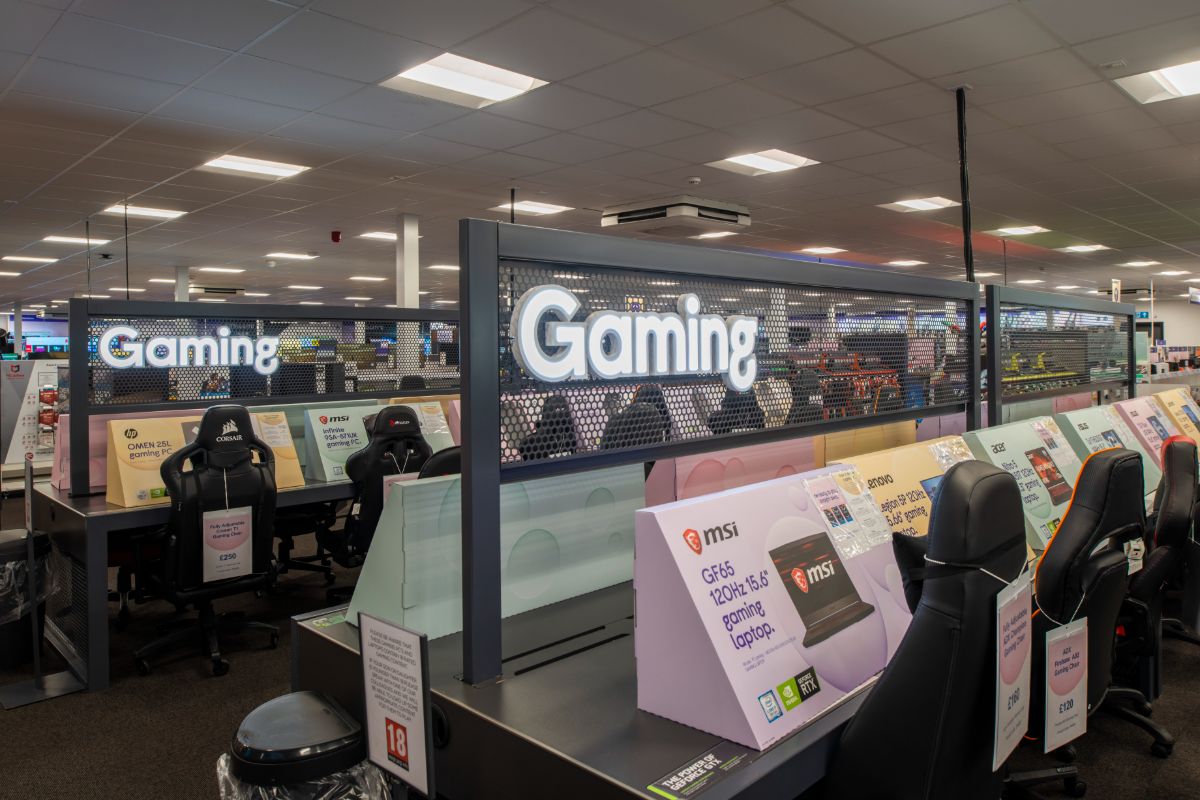Retailers have to embrace a constant focus on “newness” to create strategies that will succeed in today’s digital world, says Liz Morrell
Check out any retailer’s trading statement or annual report and the word “innovation” will be in there somewhere. Once, retailers simply had to focus on new ideas around products, but now companies have to be seen to be innovating in every element of the business as a way to win both customer spend and customer loyalty.
Innovation was a key theme at Internet Retailing’s annual conference (IRC) in October and this autumn we have also published our first research report on digital innovation, proving just how much the need for business and process reinvention has come to the top of the agenda as retailers attempt to stand out from the competition. Companies that haven’t done so already must be looking at how to ensure operations are not only cross-channel, but 100% customer focused.
Our digital innovation report showed that nearly two thirds – 64% – of respondents said that digital innovation was vital to the business. It was either a number one priority or one of the top board-level priorities for the majority of respondents.
Indeed, leading from the top is key to a successful strategy that fully embraces innovation. Speaking at IRC in October, Patrick Bousquet-Chavanne, executive director of marketing and international with Marks & Spencer, said that having a digital-savvy board was vital as a way to drive change. “It sets the pace for dynamic transformation,” he said. “A lot of transformation journeys fail because there’s not an alignment between the board and the journey. Then you have to make sure the management makes it their own.”
Compiling the IRUK Top500 list of leading retailers, we focused on strategy and innovation in terms of the journey to being everywhere for the customer. For some, this is purely about initiatives such as click and collect, although this is now seen as less of an innovation and more of a must-have. For others, it’s about true cross-device capability, where the customer journey can be picked up at any stage on any device without interruption of flow, or about making payments easier, quicker and smoother than ever before.
State of the market
There have been huge changes in the market recently and the pace of change isn’t likely to let up soon. In just the last 18 months or so, we have seen the emergence of a number of new initiatives intended to speed up the pace of innovation in retailers even further. Including the likes of Argos, John Lewis, M&S and Boots, a number of retailers have opened innovation labs as a way to embrace start-up energy and lean thinking (also see our feature on emerging practice on page 29). This can help retailers come up with – and implement – new innovations without the slower, clumsier and often siloed main business getting in the way.
This approach is also enabling business change and encouraging retailers to give staff more freedom. “You can’t appeal to the best talent unless you give them room to play,” said Dan Rubel, strategy director at Shop Direct, speaking at IRC. “We give them that and try not to create controlling mechanisms.”
Robin Phillips, director of omnichannel and development at Boots UK says it’s also about encouraging staff in the business to embrace thinking and ideas from outside the company. He says Boots’ Betalab project, like John Lewis’ JLabs, is helping the retailer bring in new ideas to the retailer. “You need to be as open as possible and invite other businesses to get involved,” he says.
Within smaller, newer or pureplay retailers, this kind of innovative thinking is often easier to foster, since these are businesses built on agility and being reactive. For larger legacy retailers, the move
to be truly innovative is more challenging, though no less important.
For M&S, this has been a particular focus of late. “Over the last four to five years, M&S has probably been on one of the most transformative journeys it has ever been on,” said Bousquet-Chavanne at IRC. “Consumers are shifting quickly, and they are smarter, faster and more empowered, and we have to respond to it. We care about innovation – it’s part of our history at M&S but let’s claim it again.”
This means moving fast. “As a retailer you have to move at scale, at speed every day,” Bousquet-Chavanne added. “There is a much faster, nimbler and more reactive M&S. Now it’s about incremental change. We bring in new ideas and see the customer response. It’s about being very flexible – try [new ideas] now, fail fast, try at a small scale and move on.”
This is key to much of the thinking behind the trend for innovation labs. At Shop Direct, however, its take on the challenges here has seen it invest in its user lab, in order to test and measure the impact of possible innovations it may introduce. “It’s a great place for us to investigate and nothing goes on the website without AB testing,” said Dan Rubel at IRC. “If things don’t make a different we don’t change them since change generally is bad for customers – they don’t like it. It has to make a big dent.”
Shop Direct has completely reinvented itself. Once a catalogue beast, it has become a digital giant thanks to its strategic focus on innovation. “Defining a clear strategy has been at the heart of the transformation,” said Rubel. “It’s about locking down where we choose to play and where not.”
A 150-strong team leads the Shop Direct strategy. It’s made up of staff who worked together to define where the company was heading, and how it would get there based upon a very clear understanding of who the retailer should target. Because Shop Direct is a mass retailer, said Rubel, it would have been easy for the retailer to adopt an all-encompassing, mass-appeal strategy.
“But if we designed a retailer for a mass audience, we would be a vanilla retailer,” he said. “We said to ourselves, ‘Where is the most important element of our customer base, where do we have a disproportionate share of the market, most profitable customers, and needs that best correlate with our abilities?’” In a four-to-five-month process, the focus was fixed on 25-to-45-year-olds. “It was crystal clear who we were going after and having that at the core of the strategy has been key to our transformation,” Rubel said.
The Resource Factor
But retailers have to be clear about what they can do with the resources at hand. “As an omnichannel business you need to think about where do you start from in terms of your capabilities – every retailer starts in a very different place depending on what assets they have started with,” says Boots’ Robin Phillips.
For Boots, its network of stores meant an intense focus on its click-and-collect proposition, something that many retailers have continued to prioritise as the market has grown over 2015. But signs suggest that click and collect in its current form may also be changing somewhat. In July, John Lewis announced it would now charge for click-and-collect for orders below a £30 threshold, while, in October, Asda revealed a slowdown of its previously announced plans to expand to 1,000 collection points across the UK.
That’s not to say the market is dead, of course, since for some retailers it continues to drive a very strong element of the omnichannel journey. The partnership between eBay and Argos, involving click and collect and drop-off delivery services, has helped the auction site and online marketplace establish a physical presence. Many other pureplays have followed suit – supplementing online operations with a physical presence – be that via stores, concessions or pop-ups.
For Shop Direct, however, the clear focus is not on stores but on digital – something that it says allows an absolute focus on strategic priorities – although like eBay a partnership with Collect+ still gives it a physical presence. “It’s liberating,” said Rubel. “We are a company that’s able to obsess about the digital experience and have a retail boardroom that all the time is able to talk about that in detail. I can’t imagine what it is like to have the distraction of stores to worry about as well. That gives us an edge. Strategy is about choosing where to focus and where not to focus.”
The Content Factor
Content is also becoming an increasingly important part of retailers’ strategies, and there are multiple ways in which the likes of Asos can influence customers through content. At M&S, Bousquet-Chavanne believes that content is a key differentiator for retailers in today’s world. “I do not believe that retailers today can differentiate themselves without the content. We’re looking after up to 40 different touchpoints and different assets, so content publishing capabilities become very important,” he said at IRC.
How quick the company is to react here is key. “We have a team of younger editors with merged print publishing and online [capability],” said Bousquet-Chavanne. “If something is trending on social and online, we’ve been ready to have the right content for the consumer. Brands need to have that capability.”
Couple this with personalisation and retailers really start to motor. “[Thinking about personalisation is] a response to customers saying they are drowning in information,” said Shop Direct’s Rubel. “They want you to curate, inspire and show things that are relevant to them. We are delivering personalised home pages and personalising the research experience. We’re reacting to the customer need there and creating real-time personalisation that makes the experience easier for them.
But he admits change isn’t easy to manage. “Transformation is tough not just because it’s busy, and there is a lot to do, but it’s also emotionally tough,” he said. “We’ve spent a lot of time nursing our colleagues through change, whether it’s directly affecting them or not. Changing customer habits have meant we’ve had to reduce investment in some areas and increase in others, and that can be painful.”
For some within the business, that means a huge cultural shift. “It’s about building a culture that embraces change and gets that it’s an ongoing reality for a digital business,” said Rubel. As our research shows, those retailers that have woven the need for innovation into strategic thinking are the companies that are best prepared for the changes that still lie ahead.






